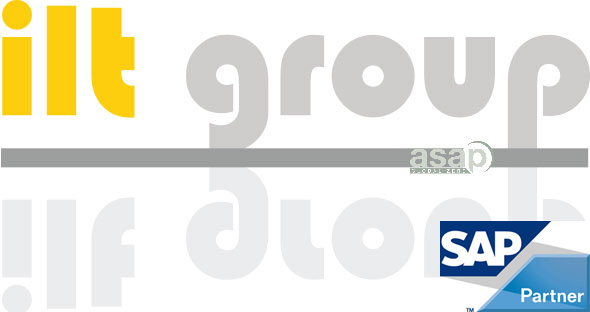Posted by Ginni ● 03-Mar-2021 13:36:40
Language barriers in healthcare
Our societies are diverse, multicultural and multilingual. Big urban areas are even more so. So what about our health services?
How language can help ethnic minority communities get better healthcare services
Since the start of the COVID-19 pandemic, figures have shown that the death rates are four times higher for black people and three times higher for Asian people, compared to their white counterparts. Because of this concerning disparity, governments have been looking into the reasons why this disproportion exists, and how to solve it.
The UK Research and Innovation (UKRI) has stated that some potential reasons for these figures are their occupations (usually essential workers), locations, household composition and pre-existing health conditions.
However, the vaccine uptake in ethnic communities is lower than white communities, which is an even bigger concern to governments. A recent poll by the Royal Society for Public Health found that 76% of the adults asked would willingly take the covid vaccine but fell to 57% of those from minority ethnic backgrounds.
A paper written by the ethnicity sub-group of the Scientific Advisory Group for Emergencies identified some reasons why uptake figures are low in ethnic communities: risk perception, low confidence in the vaccine, distrust, access barriers, inconvenience, socio-demographic context, lack of endorsement, vaccine offers and/or lack of communication from trusted providers and community leaders.
However, this is not just a COVID-19 isolated incident; David Matthews, a lecturer of health and social care at Coleg Llandrillo Cymru has stated that since the 1970s, this has been a recognised issue, with decades of research going into this widespread issue. Matthews came to the conclusion that socioeconomic inequality is the deciding factor in different ethnic communities having barriers to certain healthcare services.
Differences in the quality of services can be partly explained by language barriers, which Professor Ala Szczepura of Health Technology Assessment describes as ‘linguistic competence’, or the capacity to ‘communicate effectively and convey information in a manner that is easily understood by diverse audiences’.
In order to decrease these language competence barriers, SAGE has suggested multilingual and non-stigmatising communications, including vaccine offers and endorsements from trusted sources to increase awareness and understanding, and to address different religious and cultural concerns, stating that ‘community engagement is essential’ to increasing trust in local communities.
Having these professional interpreting and translation services readily available is becoming increasingly important in this ‘rapidly evolving linguistic [and cultural] landscape’.
To this end, an idea proposed by Dr. Meb Rashid, Medical Director of The Crossroads Clinic, has suggested that having professional interpreting and translating services readily available in all healthcare situations would massively help this disparity in health services to the advantage of non-English speaking patients. A 2017 review by the Wellesley Institute found that receiving healthcare in a language you don’t understand (or an unprofessional version of a language) can have poorer health outcomes, including a higher risk of inappropriate medical testing, an increased risk of hospitalisation and adverse medication reactions, and decreased patient satisfaction.
Canada is an excellent example of implementing professional language and cultural services, and the benefits to ethnic and cultural minorities. Ontario’s population, for example, has 25% of people whose mother tongue isn’t English or French, and 80% of them live in Toronto, and these numbers are only expected to grow.
As early as 2012, the Toronto Central Local Health Integration Network has actively recognised this issue, calling language a ‘systematic and avoidable barrier’, and launched Language Services Toronto in response. This is a bulk-buy program where nineteen hospitals and fourteen community agencies within the TCLHIN signed on to access centralised, over-the-phone interpretation services in 170 languages, 24/7. Not only did this service increase cost savings to the lowest pricing tier ($1.50 per minute) by the first year of implementation, patient and provider satisfaction skyrocketed, 76-90% for patients, and 83-95% for providers.
Having these interpreting and translation services readily available (and ensuring that health care providers know about these services) is becoming increasingly important in this ‘rapidly evolving linguistic landscape’, and Toronto has shown that it is entirely possible to achieve.
If you are in the UK, here is how to request an interpreter for your medical appointment:
The doctor must be notified prior to the appointment that an interpreter is needed, and the hospital staff will plan accordingly, booking a telephone interpreter. However, a face-to-face interpreter can be booked if there is a special need for it.
Telephone interpreters don’t need to be pre-booked, just inform the reception desk and they’ll arrange everything else; face-to-face interpreters need to be booked by hospital prior to the appointment, and follow-ups will also be arranged by the reception once notified.
These services can also be accessed within the COVID-19 vaccination program.
NHS trusts have a bank of freelance interpreters readily available 24/7 and having these interpreters for doctors (and ensuring that healthcare providers and patients know about these services) is becoming increasingly important in this ‘rapidly evolving linguistic landscape’.
ILT can help with bespoke solutions for private practices.
References
https://www.bmj.com/content/372/bmj.n242
https://coronavirusexplained.ukri.org/en/article/cad0011/
https://pmj.bmj.com/content/81/953/141
https://www.kidsnewtocanada.ca/care/interpreters
https://healthydebate.ca/2018/12/topic/language-interpretation-in-health-care
Topics: Remote interpreting, Community interpreting, Access to health services


